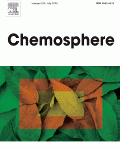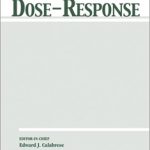Haoyu Sun, Edward J.Calabrese, Min Zheng, Dali Wang, Yongzheng Pan, Zhifen Lin, Ying Liu
A swinging seesaw as a novel model mechanism for time-dependent hormesis under dose-dependent stimulatory and inhibitory effects: A case study on the toxicity of antibacterial chemicals to Aliivibrio fischeri
Chemosphere, 2018, 205, 15-23

Hormesis occurs frequently in broadly ranging biological areas (e.g. plant biology, microbiology, biogerontology), toxicology, pharmacology and medicine. While numerous mechanisms (e.g. receptor and pathway mediated pathway responses) account for stimulatory and inhibitory features of hormetic dose responses, the vast majority emphasizes the inclusion of many doses but only one timepoint or use of a single optimized dose that is assessed over a broad range of timepoints. In this paper, a toxicity study was designed using a large number of properly spaced doses with responses determined over a large number of timepoints, which could help us reveal the underlying mechanism of hormesis. We present the results of a dose-time-response study on hormesis using five antibacterial chemicals on the bioluminescence of Aliivibrio fischeri, measuring expression of protein mRNA based on quorum sensing, simulating bioluminescent reaction and analyzing toxic actions of test chemicals. The findings show dose-time-dependent responses conforming to the hormetic dose-response model, while revealing unique response dynamics between agent induced stimulatory and inhibitory effects within bacterial growth phase dynamics. These dynamic dose-time features reveal a type of biological seesaw model that integrates stimulatory and inhibitory responses within unique growth phase, dose and time features, which has faultlessly explained the time-dependent hormetic phenomenon induced by five antibacterial chemicals (characterized by low-dose stimulation and high-dose inhibition). This study offers advances in understanding cellular dynamics, the biological integration of diverse and opposing responses and their role in evolutionary adaptive strategies to chemicals, which can provide new insight into the mechanistic investigation of hormesis.








Lascia un commento
Devi essere connesso per inviare un commento.